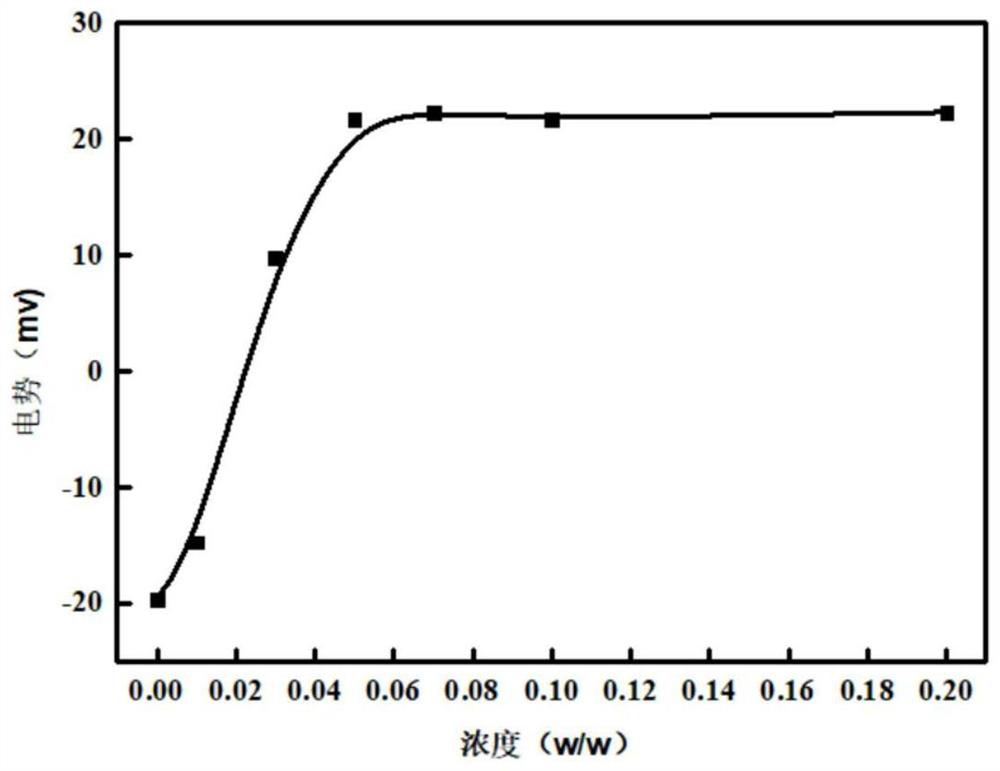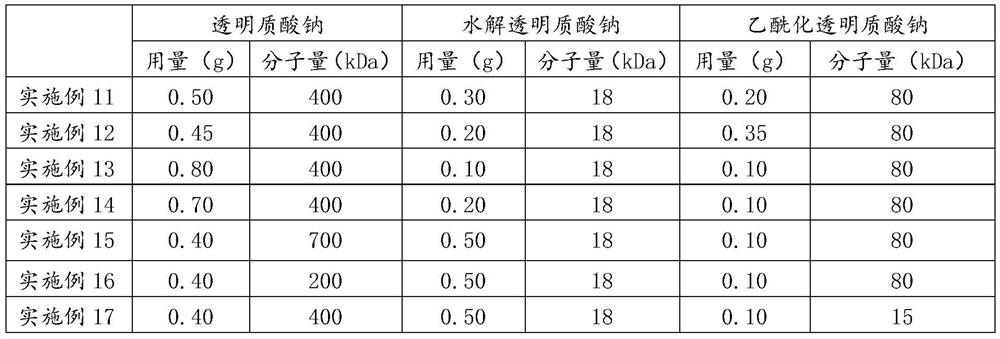Hyaluronic acid composition, negative electricity nano-emulsion with good permeability and preparation method of negative electricity nano-emulsion
A technology of hyaluronic acid and nanoemulsion, applied in skin care preparations, pharmaceutical formulations, cosmetic preparations, etc., can solve problems such as large application limitations, achieve high biocompatibility, excellent penetration effect, and broaden the scope of application Effect
- Summary
- Abstract
- Description
- Claims
- Application Information
AI Technical Summary
Problems solved by technology
Method used
Image
Examples
Embodiment 1-10
[0091] Weigh 6g of squalane, 1.2g of polyglyceryl-10 dipalmitate, 0.8g of polyglyceryl-6 distearate, 0.2g of aminobutyric acid and purified water, stir and homogenize, then pre-emulsify with a homogenizer , and then carry out emulsification by a high-pressure homogenizer (high-pressure homogenization condition is a homogeneous pressure of 900 bar, and the number of cycles is 5 times) to obtain an initial nanoemulsion. Tested according to the method of Experimental Example 1, the measured potential was -19.54mv;
[0092] Then the hyaluronic acid components in Table 1 are added to the initial nanoemulsion and stirred to obtain a negatively charged nanoemulsion, wherein squalane, polyglycerol-10 dipalmitate, polyglycerol-6 distearate, amino The sum of the mass of butyric acid, purified water and hyaluronic acid composition is 100g, and in the hyaluronic acid composition, the mass ratio of acetylated sodium hyaluronate, sodium hyaluronate and hydrolyzed sodium hyaluronate is 1:4 ...
Embodiment 11-19
[0096] Examples 11-19 are the same as Example 8, the difference is that the content and molecular weight of different sodium hyaluronates of the hyaluronic acid composition are different, as shown in Table 2.
[0097] Different sodium hyaluronate content and molecular weight in the hyaluronic acid composition of table 2 embodiment 11-19
[0098]
[0099]
experiment example 1Ze
[0105] Experimental example 1 Zeta potential
[0106] Use Brookhaven’s Zeta potential analyzer to measure the Zeta potential of the nanoemulsions obtained in Examples 1-10 and Comparative Examples 1-6. The experimental temperature is set to room temperature. After sample injection, the equilibrium time is selected to be 30s, and the number of cycles cycle is set. is 3, measured 3 times, and the experimental results are averaged, the results are as follows figure 1 and figure 2 shown.
[0107] from figure 1 and figure 2 It can be seen that the Zeta potential diagram of the nanoemulsion containing the hyaluronic acid composition described in Examples 1-10 indicates the successful preparation of negatively charged nanoemulsions, and the addition of hyaluronic acid enhances the negative charge on the surface of the droplet. It will be more difficult to contact with the skin, and then reduce the skin penetration of active ingredients, and the Zeta potential diagram of the nan...
PUM
| Property | Measurement | Unit |
|---|---|---|
| molecular weight | aaaaa | aaaaa |
| molecular weight | aaaaa | aaaaa |
| molecular weight | aaaaa | aaaaa |
Abstract
Description
Claims
Application Information
 Login to View More
Login to View More - R&D Engineer
- R&D Manager
- IP Professional
- Industry Leading Data Capabilities
- Powerful AI technology
- Patent DNA Extraction
Browse by: Latest US Patents, China's latest patents, Technical Efficacy Thesaurus, Application Domain, Technology Topic, Popular Technical Reports.
© 2024 PatSnap. All rights reserved.Legal|Privacy policy|Modern Slavery Act Transparency Statement|Sitemap|About US| Contact US: help@patsnap.com










